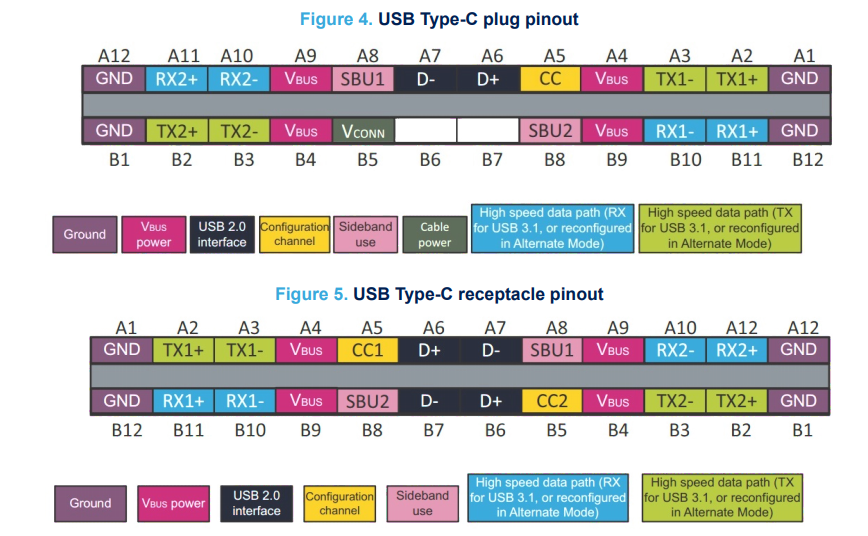DisplayPort's Alternate Mode reconfigures certain pins on the TYPE-C connector to support other protocols. For example, DisplayPort Alternate Mode's USB Type-C connector pinout.
There are different solutions listed in the VESA specification that support DP over USB Type-C via specific connector pins and wires.
VBUS: Four power pins, allowing voltages up to 20 V (A4, A9, B4, B9)
CCx: Two configuration channels (A5, B5) for protocol communication
VCONN: provides the cable configuration IC (on the socket, it is one of the CC pins)
SuperSpeed Lane1: has RX differential pair RX1p, RX1n and TX differential pair TX1p, TX1n
SuperSpeed Lane2: has RX differential pair RX2p, RX2n and TX differential pair TX2p, TX2n
SBU1,2: Sideband lines in standby mode
D+, D-: USB 2.0 high-speed signal
GND: four ground pins
The VBUS pin powers the platform to or from the platform, while the VCONN pin on the header supplies 5 V (up to 1 W) to the IC via an electronically labeled Type-C cable.
The Configuration Channel (CC) pin is used to exchange messages according to the USB PD specification. DisplayPort alternate mode uses SuperSpeed channels to implement the DisplayPort protocol: four sets of SuperSpeed USB3.1 channels with eight pins for high-speed data transfer (green TX1+, TX1-, TX2+ and TX2- pins and blue RX1 +, RX1-, RX2+ and RX2- pins) establish connections between the four DP links and the four sets of high-speed data cables.
In the TYPE-C connector, the SBU or auxiliary bus pin is the data path for the DisplayPort AUX channel and Hot Plug Detection (HPD). DisplayPort source devices and sink devices use AUX channels for device linking and management, while DP sink devices implement HPD via vendor-defined messages (VDMs) to signal their presence or draw the attention of DP sources.
Type-C connector pins D+ and D- support leg-acy USB2.0 peripherals. These pins are non-configurable and are used to manage USB 2.0 data bandwidth. These pins can be used to set USB enumeration in the host platform for serial communication or DFU functionality.
